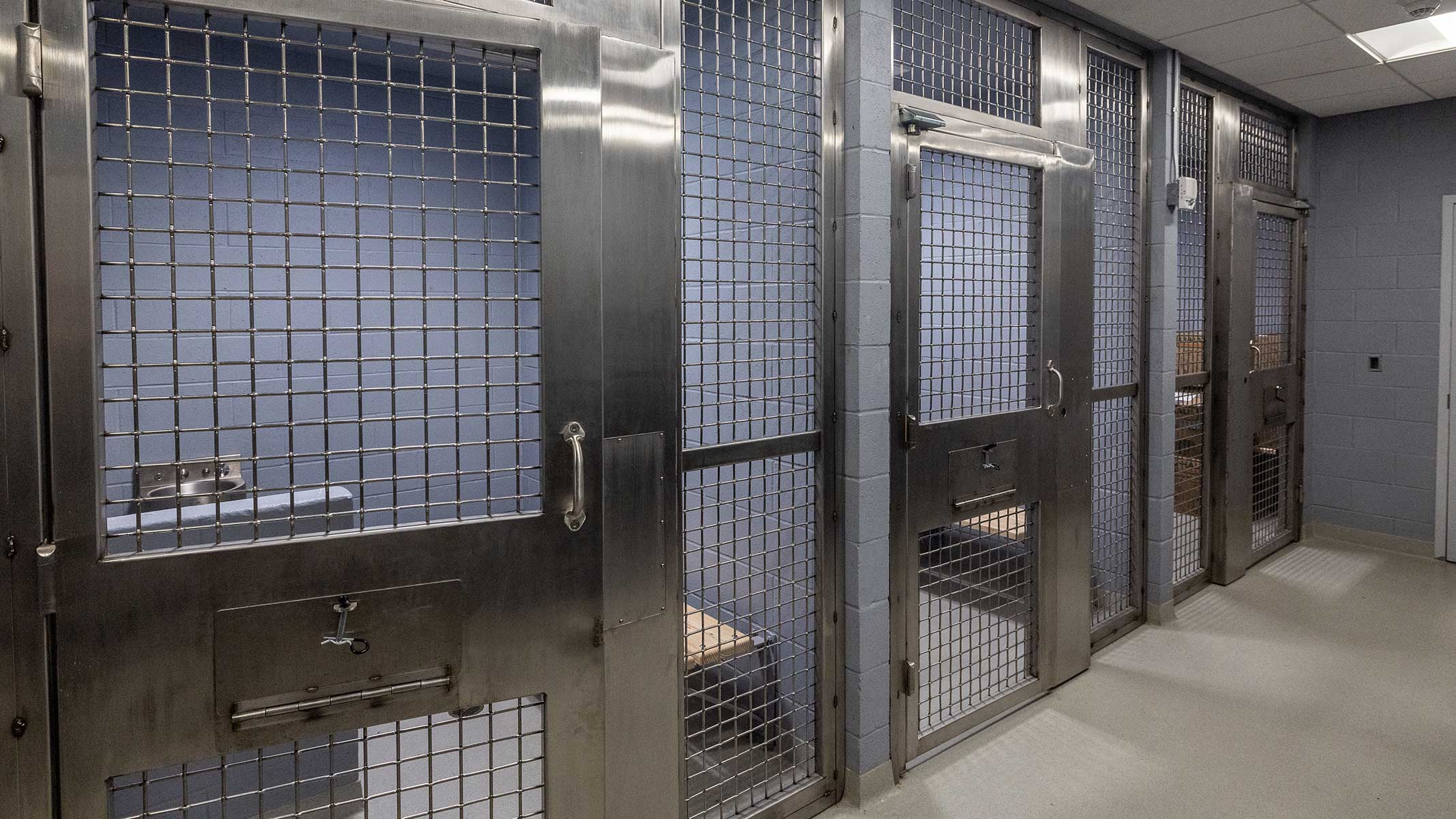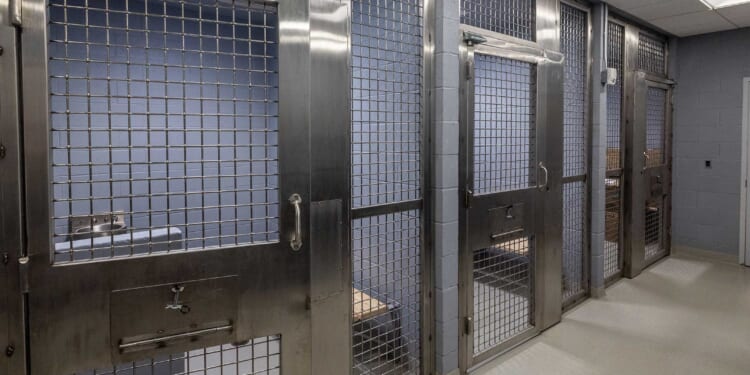
Before the Covid-19 pandemic upended everything in 2020, New York City’s Democratic Socialists of America (DSA) proposed an Agenda for Decarceration aimed at revolutionizing the city’s criminal justice system. That decision has gained renewed importance in light of signatory Zohran Mamdani’s frontrunning campaign for New York City mayor.
Mamdani has distanced himself from past positions on criminal justice. But the DSA itself—which includes several members of his campaign staff who could make their way into his mayoral administration—continues to profess belief in the agenda. And the DSA’s national platform has long advocated the abolition of the “carceral state.” If implemented, what would the Agenda for Decarceration mean for the city? In brief, it would accelerate the reduction of New York City’s incarcerated population and otherwise weaken the power of the criminal justice system—raising questions about how the DSA’s agenda, if implemented by a sympathetic mayor, would affect New Yorkers.
In 2019, more than 1,000 DSA delegates gathered in Atlanta for their national convention. The assembled party members endorsed “decarceration” as a core priority. The background to the resolution clearly outlines the underlying ideology: “DSA will promote a socialist vision of prison abolition that protects people from corporate exploitation as well as dismantling racist incarceration and ending prosecutions of the working class.” The DSA’s official platform further asserts that “incarceration, detention and policing are active instruments of class war which guarantee the domination of the working class and reproduce racial inequalities.”
Following the national organization’s lead, New York City DSA issued its Agenda for Decarceration in January 2020. The program consisted of nine existing legislative proposals and seven new ones aimed at reducing Gotham’s incarcerated population. Among these were the elimination of cash bail; decriminalization of drug possession and prostitution; creation of supervised injection sites; abolishing mandatory minimums; reducing maximum sentences with retroactive effects; and restrictions on the use of solitary confinement. The agenda also included a “no new jails” pledge, which prohibited supporting more jail construction.
All five DSA candidates for city and state government at the time backed that agenda: Assemblyman Zohran Mamdani, State Senator Jabari Brisport, Assemblywoman Phara Souffrant Forrest, Assemblywoman Marcela Mitaynes, and Boris Santos, who served as chief of staff to DSA State Senator Julia Salazar.
Many of the decarceration agenda’s proposals—bail reforms, restrictions on solitary confinement, decriminalization of drug possession—have been tried, in New York or elsewhere.
In 2019, New York eliminated bail for most misdemeanors and nonviolent felonies. Over the next two years, the city’s pretrial prison population fell by over 40 percent. At the same time, major crimes rose 36.6 percent. New York remains the only state that forbids judges from considering a suspect’s potential danger to the community when setting bail.
In 2015, New York City moved to end the use of solitary confinement for prisoners under 21. In 2021, New York State passed the HALT Act, which limits solitary confinement to 15 days for all prisoners and bans it altogether for younger and older inmates. As City Journal’s Charles Fain Lehman argued, these restrictions have contributed to greatly increased prison violence and eliminated one of the main tools corrections officers use to maintain order.
Oregon tried decriminalization of drug possession in 2021. Subsequently, narcotic-related deaths and open-air drug markets proliferated in its largest city, Portland, which was described as a “war zone.”
Other proposals from the Agenda for Decarceration might be implemented soon. Take Intro 798, a city council bill to abolish the NYPD’s Criminal Group Database, which centralizes information on alleged gang members, reported incidents, and gang dynamics. Though this item is off the legislative agenda for now, Mamdani recently expressed support for abolishing the database, echoing Councilwoman Althea Stevens’s reproach that most of the individuals on the list are minorities. NYPD Deputy Commissioner of Legal Matters Michael Gerber responded to Stevens by observing that the perpetrators of violence were also disproportionately minority.
Finally, Mamdani and other elected DSA officials who signed the agenda stand by their intention to close the city’s Rikers Island jail facility by the legally mandated 2027 deadline. The mayoral front-runner has argued that faster timelines for court hearings, as well as additional bail reforms, could help shrink the city’s jail population. Brad Lander, who serves as the city’s comptroller and has backed Mamdani in the race, praised a 2024 move on the part of Chief Administrative Judge Zayas that aimed to do the same.
Expediting cases and attempting to address the underlying factors of crime are desirable moves in their own right. But, as Lehman noted in a report for the Manhattan Institute, “under almost no conceivable scenario can the city expect to safely and sustainably reduce daily jail population to 3,300”—the borough-based jails’ expected capacity by 2027.
To get a better sense of how these policies might affect the city, I spoke with a selection of New Yorkers. In every conversation, they identified crime and public safety as the top priority.
Paula, 34, from Astoria, Queens, works for a nonprofit that aims to reduce gun violence in the city through outreach and by connecting young people to employment. Nevertheless, she concedes that “there is definitely a need for police” to “complement the work that we do” and provide an “immediate response to gun crime.” Asked about abolishing the city’s gang database, she said that “although the NYPD must be trained to avoid bias, having this kind of information is important for the city to reduce crime, whether it’s perpetrated by blacks, whites, or Asians.”
Adam, a 29-year-old resident of Long Island City, said, “There needs to be more transparency on the data that law enforcement is collecting to make arrests.” But he also allowed that “there’s a reason we have a database and that it’s a net positive.” Public safety was “definitely a top priority” for him, and the city “needs to do something about public disorder,” in part because of the increase in “people facing serious mental health issues on the streets.”
Jared, 25 and living in Manhattan, said he understands “that even those who commit crimes are human and should be treated fairly,” but that compassion needs to be “balanced against the need to maintain general public order.” This view underscores many New Yorkers’ concern about the Agenda for Decarceration—that reducing the number of people in jail could come at a cost to public safety.
Mamdani’s recent comments suggest that he has departed somewhat from the Agenda for Decarceration. Abolishing prisons, for example, now seems to be off the table. This modulation doesn’t seem to have fazed his supporters, who have praised his proposal for a Department for Community Safety. His campaign did not return a request for comment.
The city’s progressive establishment, however, seems to be digging in. The Vera Institute of Justice continues to push for the same reforms that have proven ineffective. The DSA’s national platform, until recently, emphasized its aim of dismantling the “carceral state.” And the city’s progressive city council has done little to address mounting violence at Rikers.
Whether this coalition will shape New York’s criminal-justice policy remains to be seen. But the ideas outlined in the Agenda for Decarceration seem at odds with what most New Yorkers want—and with the evidence on what keeps them safe.
Photo by J. Conrad Williams, Jr./Newsday RM via Getty Images

















